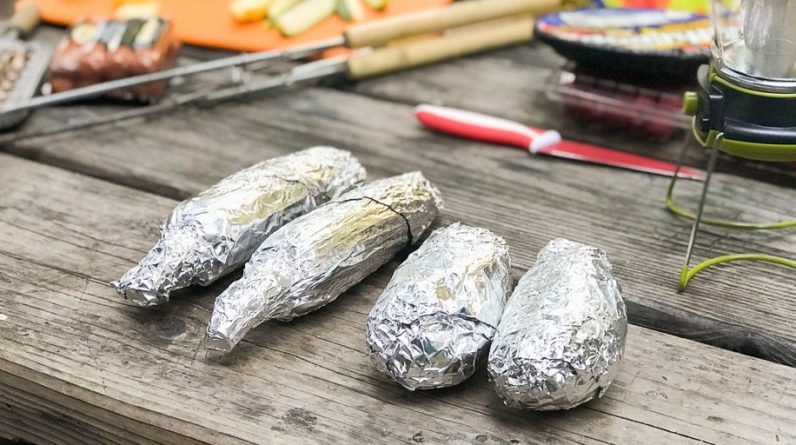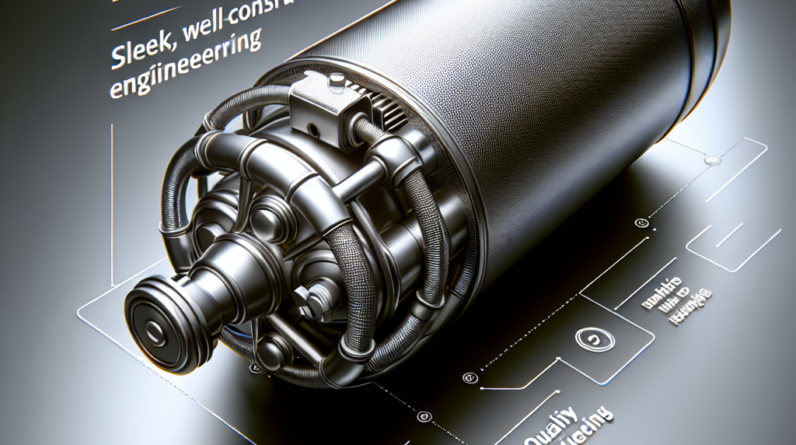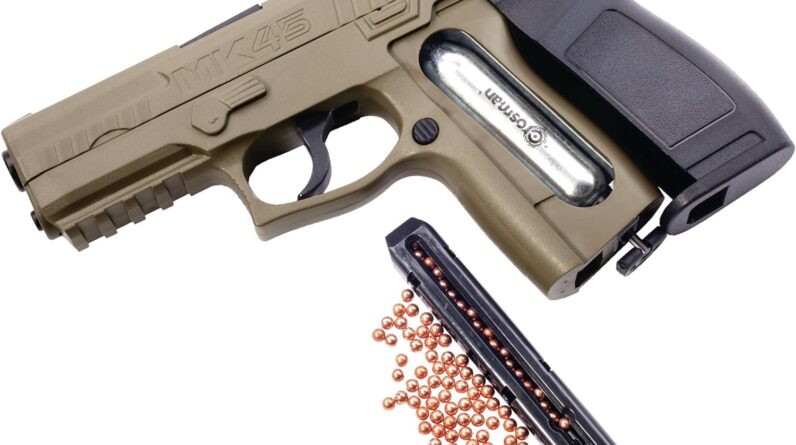
If you’ve ever gone camping and found yourself lugging around heavy pots, pans, and grilling equipment, you’ll be thrilled to learn about the exciting world of lightweight alternatives for campfire cooking. Gone are the days of struggling with bulky gear that weighs you down and takes up valuable space in your backpack. In this article, we will take a closer look at some innovative solutions that will revolutionize your camping experience, making it easier, more enjoyable, and, most importantly, much lighter on your shoulders. So get ready to discover a whole new way of cooking around the campfire!

This image is property of cdn.thewirecutter.com.
Types of Lightweight Campfire Cooking Equipment
When it comes to campfire cooking, having the right equipment can make all the difference. Whether you’re a seasoned camper or new to the great outdoors, having lightweight cooking gear can greatly enhance your camping experience. In this article, we will explore some of the most popular types of lightweight campfire cooking equipment available on the market today. From portable camp stoves to collapsible cooking utensils, we will cover everything you need to know to make an informed decision.
Portable Camp Stoves
Portable camp stoves are a popular choice for campers who want a reliable and convenient way to cook their meals. These stoves are designed to be lightweight and compact, making them easy to transport and set up at your campsite. They come in various sizes and styles, so you can choose the one that best suits your needs. Some portable camp stoves even have multiple burners, allowing you to cook multiple dishes at once.
Titanium Cookware
Titanium cookware is known for its durability and lightweight properties, making it a top choice for campers who want high-quality gear without the added weight. Titanium is corrosion-resistant, so you don’t have to worry about it rusting or deteriorating over time. Additionally, it heats up quickly and distributes heat evenly, allowing you to cook your meals efficiently.
Aluminum Cookware
Aluminum cookware is another lightweight option for campfire cooking. It is affordable, conducts heat well, and is resistant to rust and corrosion. Aluminum cookware is also very lightweight, making it easy to transport and carry with you on your camping adventures. However, it’s important to note that aluminum is not as durable as other materials, so it may not last as long with frequent use.
Silicone Cookware
Silicone cookware is a fantastic option for campers who prioritize convenience and compactness. Silicone is flexible and easily collapsible, making it perfect for saving space in your backpack or camping gear. It is also nonstick, which means you won’t have to worry about your food sticking to the surface. However, silicone cookware may not be able to withstand high temperatures, so it’s important to check the heat resistance before using it on an open flame.
Collapsible Cooking Utensils
Collapsible cooking utensils are a great addition to your lightweight campfire cooking equipment. These utensils are designed to fold or collapse, making them easy to store and transport. From spatulas to tongs to serving spoons, you can find a wide range of collapsible utensils that are durable and convenient to use.
Advantages of Lightweight Campfire Cooking Equipment
Now that we have explored the types of lightweight campfire cooking equipment available, let’s take a look at the advantages of using such gear.
Portability
One of the greatest advantages of lightweight campfire cooking equipment is its portability. When you’re out in the wilderness, every ounce matters, and having lightweight gear allows you to carry more without sacrificing comfort or convenience. Whether you’re backpacking, hiking, or simply traveling to a campsite, lightweight cooking equipment ensures that you can cook meals wherever your adventures take you.
Ease of Use
Another advantage of lightweight campfire cooking equipment is its ease of use. Most lightweight cooking gear is designed with simplicity in mind, allowing you to set up and start cooking in no time. Whether you’re a seasoned camper or new to cooking on an open fire, lightweight equipment makes the entire process hassle-free.
Efficiency
Lightweight campfire cooking equipment is designed to be efficient. From portable camp stoves that heat up quickly to titanium cookware that distributes heat evenly, you can trust that your meals will be cooked to perfection. These efficiency features not only save you time but also help conserve fuel during your camping trips.
Versatility
Last but certainly not least, lightweight campfire cooking equipment offers versatility. Many of these pieces of gear can be used on various heat sources, such as campfires, gas stoves, or even portable grills. This versatility ensures that you can use your cooking equipment in different camping scenarios, making it a worthwhile investment for all types of outdoor enthusiasts.

This image is property of cdn.thewirecutter.com.
Portable Camp Stoves
Overview
Portable camp stoves are a must-have for any camper who wants to enjoy a warm meal while out in nature. These stoves are designed to be lightweight and easy to transport, making them ideal for backpacking trips or car camping adventures. They typically consist of a burner, fuel source, and a cooking surface, allowing you to boil water, cook meals, and even grill food.
Fuel Types
Portable camp stoves are available in various fuel types, each with its own set of advantages and considerations. Here are some popular fuel types used in portable camp stoves:
-
Propane: Propane is a common fuel choice for portable camp stoves due to its convenience and high heat output. Propane canisters are easy to find and can provide consistent heat for extended periods. However, propane canisters can be bulky and may require additional storage space.
-
Butane: Butane is another popular fuel type for portable camp stoves. It burns clean, is highly efficient, and is readily available. Butane canisters are typically lighter and more compact than propane canisters, making them a great choice for backpackers or those with limited storage space.
-
Isobutane: Isobutane is similar to butane but can perform better in colder temperatures. If you plan on camping in colder climates, an isobutane fuel canister might be the best choice for your portable camp stove.
Types of Portable Camp Stoves
There are several types of portable camp stoves available on the market, each with its own features and benefits. Here are some of the most common types:
-
Canister Stoves: Canister stoves are compact and lightweight, making them a popular choice among backpackers and hikers. They are easy to use, with the fuel canister attaching directly to the stove. Canister stoves generally offer excellent heat control and are compatible with both propane and butane fuel canisters.
-
Liquid Fuel Stoves: Liquid fuel stoves, such as white gas stoves, are known for their reliability and ability to perform well in extreme conditions. These stoves use liquid fuel, such as white gas or unleaded gasoline, which can be more readily available in remote areas. Liquid fuel stoves are generally more versatile than canister stoves, allowing you to adjust the flame intensity.
-
Wood-Burning Stoves: Wood-burning stoves are a popular choice for environmentally-conscious campers. These stoves utilize twigs, sticks, or other natural fuel sources, eliminating the need to carry additional fuel. Wood-burning stoves are lightweight and can be an excellent option for those who want to minimize their environmental impact.
Pros and Cons
Portable camp stoves offer numerous benefits, but it’s important to consider their pros and cons before making a purchase. Here are some of the advantages and disadvantages of portable camp stoves:
Pros
-
Portability: Portable camp stoves are specifically designed to be lightweight and compact, making them easy to transport and set up at any campsite.
-
Convenience: These stoves provide a convenient and reliable way to cook meals, boil water, and enjoy hot drinks while camping. They offer faster cooking times compared to open-fire cooking and allow for precise heat control.
-
Safety: Portable camp stoves are generally safe to use, provided you follow the manufacturer’s instructions and take necessary precautions. They feature stable bases and can provide a secure cooking surface, reducing the risk of accidents.
-
Fuel Options: Portable camp stoves offer a range of fuel options to suit different needs and preferences. Whether you prefer propane, butane, or a renewable fuel source like wood, there’s a portable camp stove that can accommodate your requirements.
Cons
-
Fuel Dependence: Portable camp stoves require a fuel source, whether it be small canisters or liquid fuel. This means you need to plan and carry enough fuel for the duration of your trip, which can sometimes add weight and take up space.
-
Limited Cooking Space: The cooking surface of portable camp stoves is generally smaller compared to traditional stovetops. This can limit the types of cooking techniques and the number of dishes you can prepare at the same time.
-
Environmental Impact: While some portable camp stoves offer renewable fuel options like wood, others rely on non-renewable fuel sources. Consider the environmental impact of your fuel choice and opt for more sustainable options whenever possible.
Titanium Cookware
Overview
Titanium cookware has gained popularity among campers and outdoor enthusiasts for its excellent strength-to-weight ratio. This lightweight material makes titanium cookware a top choice for those who want to reduce the weight of their camping gear without compromising on durability.
Advantages
One of the primary advantages of titanium cookware is its lightweight nature. Titanium is incredibly strong while being significantly lighter than other commonly used materials like stainless steel. This makes it ideal for backpacking or any situation where weight is a concern.
Another advantage of titanium cookware is its durability. Titanium is corrosion-resistant, which means it can withstand the harsh outdoor elements without rusting. This durability ensures that your cookware will last for many camping trips to come.
Titanium cookware also excels in heat distribution. It heats up quickly and evenly, so you can cook your meals efficiently and minimize hotspots. This even heat distribution results in more evenly cooked food and reduces the risk of burning or undercooking.
Disadvantages
While titanium cookware offers numerous advantages, it also has some disadvantages to consider. One of the main drawbacks of titanium cookware is its cost. Titanium is more expensive than other materials commonly used for cookware, such as aluminum or stainless steel. However, its durability and longevity can offset the initial investment.
Titanium cookware can be prone to warping if not used and cared for properly. It is essential to follow the manufacturer’s instructions to ensure that your titanium cookware remains in good shape. Additionally, some types of titanium cookware may not be compatible with induction cooktops, so it’s important to check the product specifications before purchasing.
Best Brands and Products
When it comes to titanium cookware, there are several reputable brands to choose from. Here are a few popular brands known for their high-quality titanium cookware:
-
Snow Peak: Snow Peak offers a wide range of titanium cookware, including pots, pans, and cooking sets. Their products are known for their excellent craftsmanship and attention to detail.
-
MSR (Mountain Safety Research): MSR is a well-known brand in the camping and outdoor industry. They offer a variety of titanium cookware options, designed with durability and lightweight performance in mind.
-
TOAKS: TOAKS specializes in lightweight titanium camping cookware. Their products are highly regarded for their quality, performance, and affordable price point.
When considering your options, be sure to read product reviews and compare features to find the titanium cookware that best suits your needs and budget.

This image is property of lifeundercanvas.co.uk.
Aluminum Cookware
Overview
Aluminum cookware has long been a staple in campfire cooking. Its lightweight properties and affordability make it a popular choice for campers who want reliable and durable cooking gear. Aluminum cookware is also known for its excellent heat conductivity, allowing for efficient and even cooking.
Advantages
One of the primary advantages of aluminum cookware is its lightweight nature. Aluminum is significantly lighter than other commonly used cookware materials, such as stainless steel or cast iron. This makes it easy to carry and transport, especially when weight is a concern during camping trips or outdoor adventures.
Aluminum cookware also excels in heat distribution. It conducts heat quickly and evenly, allowing for efficient cooking and reducing the risk of hot spots. This even heat distribution ensures that your meals are cooked consistently and prevents any potential burning or undercooking.
Additionally, aluminum cookware is affordable, making it a budget-friendly option for campers. Compared to other materials, such as titanium or stainless steel, aluminum cookware generally comes at a lower price point without compromising on quality or performance.
Disadvantages
While aluminum cookware offers many advantages, it’s important to consider its disadvantages as well. One of the main drawbacks of aluminum cookware is its durability. Aluminum is a softer metal than materials like stainless steel, making it more prone to scratches, dents, and warping. If not handled with care, aluminum cookware may not withstand the rigors of frequent outdoor use.
Aluminum cookware can also react with certain acidic or alkaline foods, resulting in a metallic taste. To mitigate this, many aluminum cookware sets are now coated with a nonstick layer or anodized to prevent direct contact between the food and the metal.
Further, it’s worth noting that aluminum is not suitable for all types of cooking surfaces. It can react with certain heat sources, such as induction cooktops, so it’s essential to check compatibility before using aluminum cookware.
Best Brands and Products
When it comes to aluminum cookware, there are several reputable brands to consider. Here are a few popular brands known for their quality and performance:
-
GSI Outdoors: GSI Outdoors offers a range of aluminum cookware sets designed for outdoor cooking. Their products are known for their durability, ease of use, and affordability.
-
Stanley: Stanley is a household name in camping and outdoor gear. They have a selection of aluminum cookware options that are built to withstand rugged conditions while delivering excellent cooking performance.
-
Texsport: Texsport specializes in affordable camping gear, including a variety of aluminum cookware options. Their products are often praised for their durability and value for money.
When choosing aluminum cookware, read product reviews, and compare features to ensure that you select the best option for your camping needs.
Silicone Cookware
Overview
Silicone cookware has become increasingly popular in recent years, thanks to its flexibility, lightweight design, and easy maintenance. This heat-resistant material is a great alternative to traditional cookware and offers several advantages for campers and outdoor enthusiasts.
Advantages
One of the primary advantages of silicone cookware is its flexibility and collapsibility. Silicone is a pliable material that can be easily folded or collapsed, making it perfect for saving space in your camping gear or backpack. This collapsibility allows you to carry more essential items without sacrificing precious storage space.
Silicone cookware is also known for its nonstick properties. This means that food is less likely to stick to the surface, making it easier to cook, serve, and clean up afterward. Nonstick silicone cookware eliminates the need for excessive oil or butter, promoting healthier cooking options while minimizing cleanup time.
Furthermore, silicone cookware is heat-resistant, making it suitable for use in different camping scenarios. It can withstand high temperatures without melting or emitting harmful fumes, making it safe to use on campfires, portable stoves, or even directly over hot coals.
Disadvantages
While silicone cookware offers numerous advantages, it’s important to consider its limitations as well. One disadvantage of silicone cookware is its lower heat conductivity compared to metal cookware. This means that it may take slightly longer for your food to cook evenly or reach the desired temperature.
Silicone cookware may also not be suitable for all types of cooking, especially those that require high or quick temperature changes. For example, silicone cookware is not ideal for searing meats or achieving a crispy texture on certain dishes. However, it is suitable for boiling water, simmering sauces, or baking.
When using silicone cookware, it’s crucial to follow the manufacturer’s instructions and avoid exposing it to direct flames or placing it directly on hot surfaces for extended periods. Overheating silicone cookware can cause damage or affect its performance.
Best Brands and Products
When it comes to silicone cookware, there are several reputable brands known for their quality and durability. Here are a few popular brands to consider:
-
Silipint: Silipint offers a range of silicone cookware and drinkware, including pots, pans, bowls, and cups. Their products are known for their durability, vibrant colors, and versatility.
-
Sea to Summit: Sea to Summit is a trusted brand in the outdoor industry, offering a variety of silicone cookware options. Their cookware is designed with the camper in mind, with collapsible features and practical designs.
-
OXO: OXO is well-known for its innovative and high-quality kitchen products. They offer a line of silicone cookware that combines functionality, durability, and ease of use.
When selecting silicone cookware, consider the specific pieces you need, read reviews, and compare features to find the best fit for your camping adventures.

This image is property of u7q2x7c9.stackpathcdn.com.
Collapsible Cooking Utensils
Overview
Collapsible cooking utensils are a valuable addition to any camper’s kitchen kit. These utensils are designed to be compact and collapsible, taking up minimal space in your backpack or camping gear. From spatulas to tongs to serving spoons, collapsible cooking utensils come in a variety of options to suit your cooking needs.
Advantages
One of the primary advantages of collapsible cooking utensils is their compact design. These utensils can be folded or collapsed, reducing their size significantly. This makes them easy to pack, store, and transport, saving valuable space in your camping gear.
Collapsible cooking utensils are also lightweight, making them ideal for backpackers or those who prefer to travel light. By opting for collapsible utensils, you can enjoy the convenience of having essential cooking tools without the added weight.
Furthermore, collapsible cooking utensils are often made from durable materials such as silicone or stainless steel, ensuring their longevity and performance. Despite their collapsible design, these utensils are generally sturdy and capable of handling various cooking tasks.
Disadvantages
While collapsible cooking utensils offer numerous advantages, it’s worth noting that they may not be as sturdy as their non-collapsible counterparts. The folding mechanisms and collapsible features may introduce some degree of flexibility or potential weak points. However, premium collapsible utensils are designed to withstand regular use and deliver reliable performance.
Collapsible cooking utensils may also have a slightly reduced lifespan compared to traditional utensils, especially if not handled with care. It’s important to follow the manufacturer’s instructions and avoid applying excessive force or bending the utensils beyond their intended capacity.
Best Brands and Products
When it comes to collapsible cooking utensils, there are several reputable brands known for their quality and functionality. Here are a few popular brands to consider:
-
GSI Outdoors: GSI Outdoors offers a range of collapsible cooking utensils designed for outdoor use. Their products are known for their durability, practicality, and space-saving design.
-
Sea to Summit: Sea to Summit is a trusted brand that specializes in outdoor gear, including collapsible cooking utensils. Their utensils are designed with lightweight materials and efficient folding mechanisms.
-
MSR (Mountain Safety Research): MSR offers a variety of collapsible cooking utensils that are lightweight and easy to pack. Their utensils are praised for their durability and versatility.
When choosing collapsible cooking utensils, consider the specific utensils you need and compare features to find the ones that best meet your camping and cooking requirements.
Factors to Consider When Choosing Lightweight Campfire Cooking Equipment
When choosing lightweight campfire cooking equipment, several factors need to be considered to ensure you make the right choice. Here are some key considerations to keep in mind:
Weight and Size
One of the most important factors to consider when selecting lightweight campfire cooking equipment is the weight and size of the gear. As a camper, every ounce counts, and having lightweight gear allows you to pack efficiently and comfortably carry your equipment. Consider your specific needs and choose equipment that balances weight and functionality.
Additionally, size plays a crucial role, especially when it comes to storage and transportation. Consider whether the equipment can be collapsed or disassembled to fit easily into your backpack or camping gear. Opting for compact and collapsible options helps maximize space, allowing you to bring more essential items on your camping trips.
Material
The material of your campfire cooking equipment is another crucial consideration. Different materials offer varying levels of durability, heat distribution, and weight. Consider the advantages and disadvantages of each material, such as titanium, aluminum, or silicone, and choose the one that best suits your needs and preferences.
Durability
Durability is an important factor when selecting campfire cooking equipment. Camping gear is often subjected to rugged conditions, and it’s important to choose equipment that can withstand the elements. Look for materials that are corrosion-resistant, scratch-resistant, and can handle frequent use without warping or breaking.
Heat Distribution
Efficient heat distribution is key to cooking delicious meals in your campfire cooking equipment. Look for equipment that provides even heat distribution, minimizing the risk of hot spots and ensuring your food is cooked consistently. Materials like titanium and aluminum are known for their heat conductivity and even heat distribution.
Ease of Cleaning
Consider the ease of cleaning when selecting campfire cooking equipment. Look for nonstick surfaces or materials that are easy to wipe clean. Additionally, collapsible or disassembling equipment can make cleaning more convenient, especially in outdoor environments where access to water and cleaning supplies may be limited.

This image is property of bikepacking.com.
Safety Tips for Using Lightweight Campfire Cooking Equipment
While lightweight campfire cooking equipment offers numerous advantages, it’s essential to prioritize safety when using it. Here are some safety tips to keep in mind:
Location and Placement
Choose a safe and suitable location for your campfire and cooking area. Ensure that the cooking area is clear of flammable materials and at a safe distance from tents or other belongings. Avoid cooking under low-hanging branches or near structures that could catch fire.
Fire Safety Precautions
Always observe fire safety precautions when cooking on a campfire or portable stove. Keep a fire extinguisher or a bucket of water nearby for emergencies. Never leave the cooking equipment unattended, and make sure to fully extinguish the fire after use.
Handling Hot Surfaces
Take extra care when handling hot surfaces or cookware. Use heat-resistant gloves or utensils with insulated handles to avoid burns. Allow surfaces to cool down before touching or storing them.
Proper Fuel Storage
Store your fuel canisters or liquid fuel containers in a cool, dry place, away from direct sunlight or open flames. Follow the manufacturer’s instructions and recommendations for proper fuel storage and transportation.
Conclusion
Exploring lightweight alternatives for campfire cooking equipment opens up a world of possibilities for outdoor enthusiasts. From portable camp stoves to titanium cookware, aluminum cookware, silicone cookware, and collapsible cooking utensils, there are numerous options to choose from based on your specific needs and preferences. Consider factors such as weight, size, material, durability, and heat distribution when selecting your gear. Prioritize safety by following fire safety precautions, handling hot surfaces with care, and storing fuel properly. With the right lightweight campfire cooking equipment, you can enhance your camping experience and enjoy delicious meals in the great outdoors.






